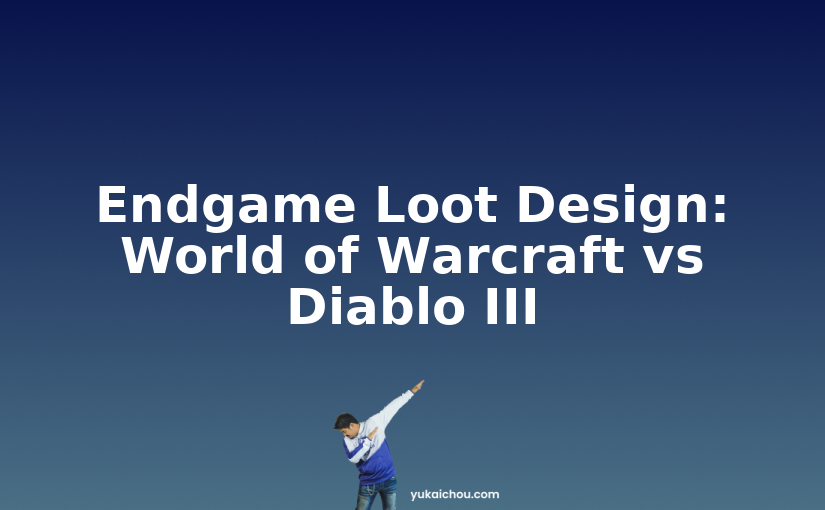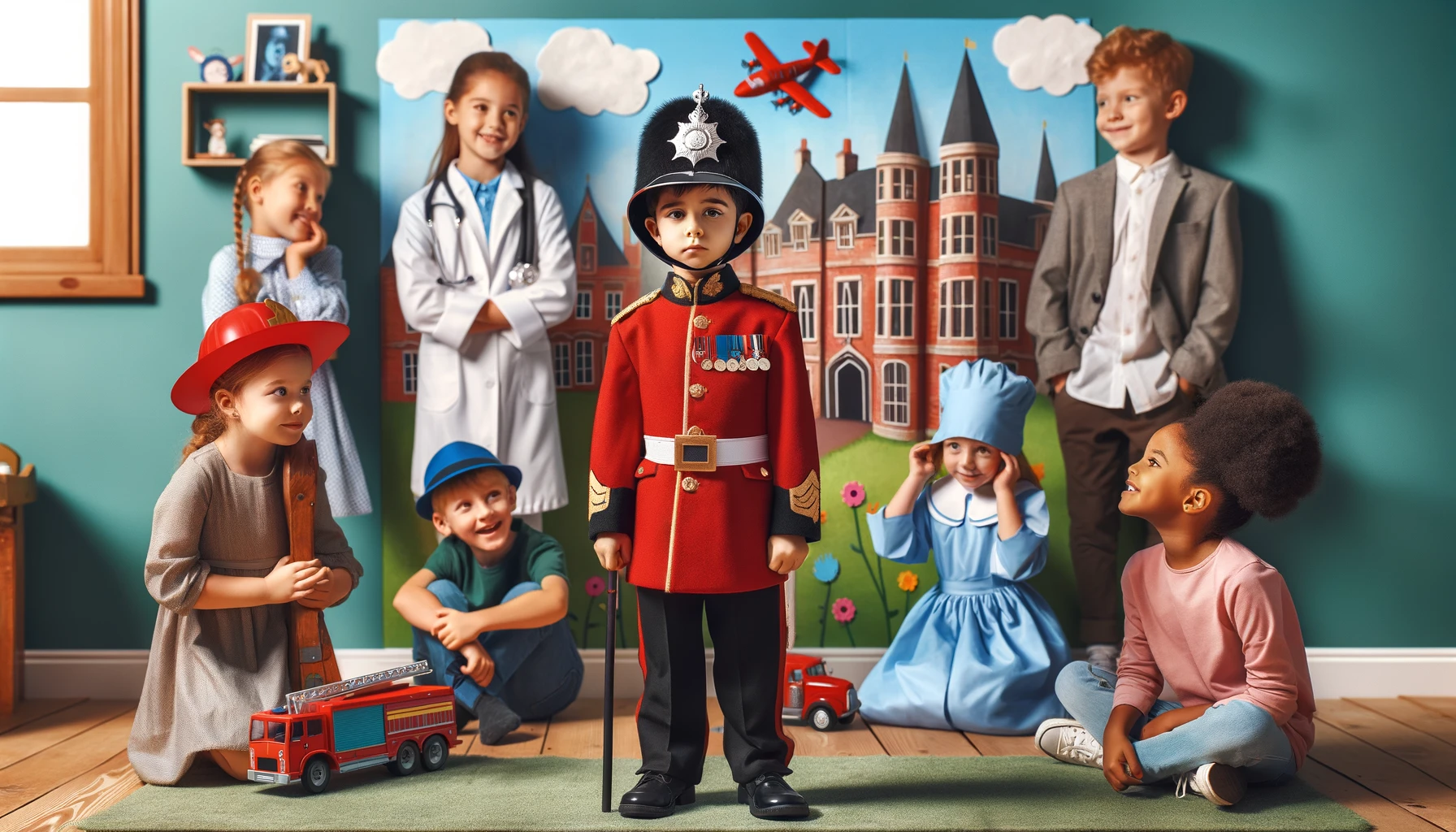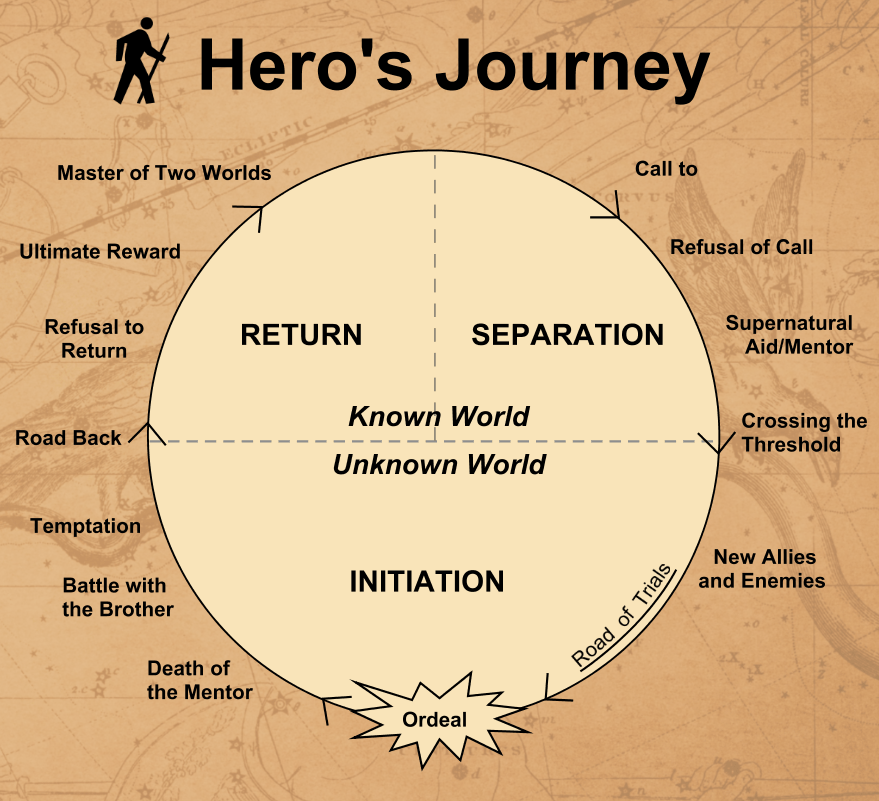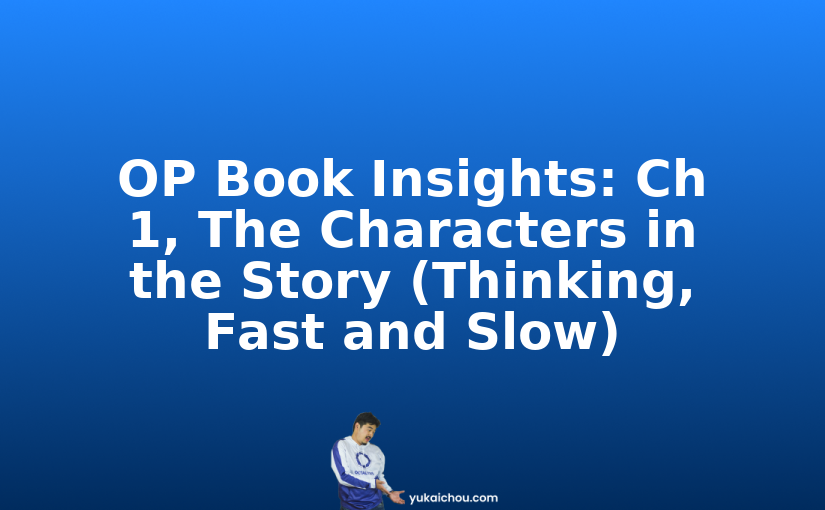Hey Primers. Today, we’re going to talk about the endgame loot design systems, between World of Warcraft, and Diablo III. We will see how they apply different understandings of commitment and reward within their player experience.
This video was originally published on OctalysisPrime.com
And this relates to this topic that we talked about a little bit which is the mythic dungeon system and the loot box system that attaches to it. (Also on OctalysisPrime.com)
Background on World of Warcraft and Diablo
So, for some background: World of Warcraft and Diablo are both
Blizzard games. They’re made by this gaming company called Blizzard. They’re both very successful. They create some of the best franchises in the world. And there’s a difference between the two games.
Diablo, even though they both seem like what we call RPGs role-playing games. Diablo is a hack-and-slash. There’s almost nothing else you can do. You go in, kill monsters, destroy everything, go home, look at your loot and then go out and destroy everything again.
World of Warcraft is more of what they call an MMORPG, massively multiplayer online role-playing game, which means you’re in a world where you can explore. You can go into professions like you alchemy, you can create guilds and you have all these different types of activities in that world.
So, these two games are different in nature, one is more immersive and exploratory, and the other is more satisfying your sensation drive, just go in and destroy all these monsters.
World of Warcraft has been a very successful game. People have been paying monthly fees of $10-15 every single month after $40-60 purchases of the game.
For more than 15 years, so it’s very very successful.
Trying to Solve Endgame Problems
But it still has a lot of problems to solve. And it was trying to create a good end game design. So basically on each expansion which the new beta version of a release, people would play hardcore: they get the highest gear, they have so many great things. And they feel like, “Well, why do I still play this game?” And so the designers wanted to figure out how to do good end game design.
Now, let’s take a moment to discuss Diablo III, but first, some background in Diablo II.
Diablo II was a very very successful game, people played for 5-10 years, and they still love the game. And then Diablo III came out. And the first version, everyone hated it. It was not so great. Some people enjoyed it but got old real fast, they thought it was a crappy game and didn’t want to play it so much and there was all this issue with the real money auction house, which will evaluate in another video.
The problem is that they didn’t like this end game design. Most people still played hundreds of hours on Diablo III but then they said, “Wow, we only play it for three months and then it got boring.” But they wanted to play for 5-10 years as they had with Diablo II.
In the new version of Diablo III, called Reaper of Souls, they eventually solved all these problems. People felt it was fun again they went back for a lot more of it.
In Reaper of Souls they introduced the mythical dungeon system, what people do is they would choose what level they want to play (mythic level one, level two, level 10, level 50, and his skills up, and if you can beat the mythical dungeon within a certain timeframe then you get rewarded greatly for it.
Now, in World of Warcraft, the latest version which is 8.0
called The Battle for Azeroth, they wanted to solve this issue too, so even in the previous version, 7.0, they adapted this as some of the mythical dungeons and mythical plus, which is just building higher and higher levels.
We talked about this in one of my game design videos, called the Mythic Keystone Chest design, we talked about that mythic plus.
Why do Players Still Complain?
Now, even with that system, a lot of people still complain about World of Warcraft. And so, why is that the case? It was very unexpected because people really liked it in Diablo III, but people didn’t like the whole system as much.
The mythic plus system, especially the loot system, and all that work. What is the difference? Now we keep in mind, when we think about the end game, this is all about the endgame, people are motivated to play in this game.
Oftentimes, because of Core Drive 7: Unpredictability & Curiosity, that attaches to Core Drive 4: Ownership & Possession, and Core Drive 2: Development & Accomplishment.
A lot of time the Core Drive 3: Empowerment of Creativity & Feedback is no longer there. There are some social aspects but for Diablo, it doesn’t have to be social for World of Warcraft, it’s a little more social.
But Diablo is a slot machine design. You go into the dungeon. And when you kill these monsters you kill the boss, it’s like pulling off a machine, and something will drop out from the boss, and maybe something you want maybe you want, but when it drops you get cooler gear and a lot of challenge.
The challenge goes on at a higher level mythic dungeon, and just rinse and repeat so it’s just this big casino game that you’re playing over and over and over again.
Now, while World of Warcraft was doing the same thing, you play this big dungeon that requires five players to be part of. And after defeating a lot of costs, anywhere from four to eight big bosses, you get a reward, sometimes that is what you really want.
This sounds a lot like Diablo III’s system, so why is World of Warcraft not doing as well? Why are people complaining and so angry about it?
The Literature of Mystery Box Designs
This goes back to the literature of mystery box design. I believe I was, as far as I know, the first person to have come up with different CD7 design types that recognize different kinds of mystery box designs
In Diablo III, the commitment to get the mystery box was lower. They weren’t willing to do drawn out commitments. But the lower commitment worked.
Now, what the Blizzard developers didn’t think of–and they are really experienced game designers–was that for Diablo, you can complete a dungeon by yourself, you don’t have to organize a bunch of people get friends together you can just go by yourself, and then finish it in anywhere between 15 to 20 minutes, very very fast.
Whereas in World of Warcraft, for this dungeon again you have to find other players to play with you and be very committed because remember we talked about, if one person drops out, then the whole thing breaks down. That’s a high-stress kind of situation. A lot of times it takes 20 minutes or even longer just to find the right teammates to be with you. People have to log in at the same time, producing a huge commitment just to get together. And when you do a World of Warcraft dungeon, it takes anywhere between 40 minutes to three hours.
The big difference between these two designs is that in
Diablo, you get to play the slot machines, over and over and over again really quickly. It’s a small commitment to see what you win. And therefore, really well for that pacing for that dynamic for World of Warcraft, it’s a huge commitment to pull the slot machine bar, and if you do all this work of the sweat, blood, and tears, and you pull the slot machine bar (and don’t get what you like) you can’t decide, “I’m gonna do this again for 10 times today”, because you don’t have the time to do that.
The psychological result? You tried this one I saw that it was not worth it (you committed a lot of time and effort and didn’t get the loot outcome). So you leave and you’re unhappy. Yeah, absolutely. The nature of the mystery box design has a positive effect for Diablo III, but not for World of Warcraft, at least how they are currently using it.
Observe Mystery Box Designs You See
I just want you to soak in this knowledge and understand that it doesn’t matter if you’re creating a game, if you’re trying to get good game design. If you try to create behavioral change, by understanding these psychological principles of the 8 Core Drives and these game design techniques you can avoid mistakes that even these top game designers are making and jump to something better, creating engaging experiences.
What I hope you’ll share in the comments is about your own experiences with mystery box designs. How were they set up, what were their rules, and how did those experiences make you feel?
If you’ve seen other games use these designs, I’d be super impressed if you could share whether they succeeded or failed based on your understanding of the Core Drives. With that said, I’ll see you soon in another video.








